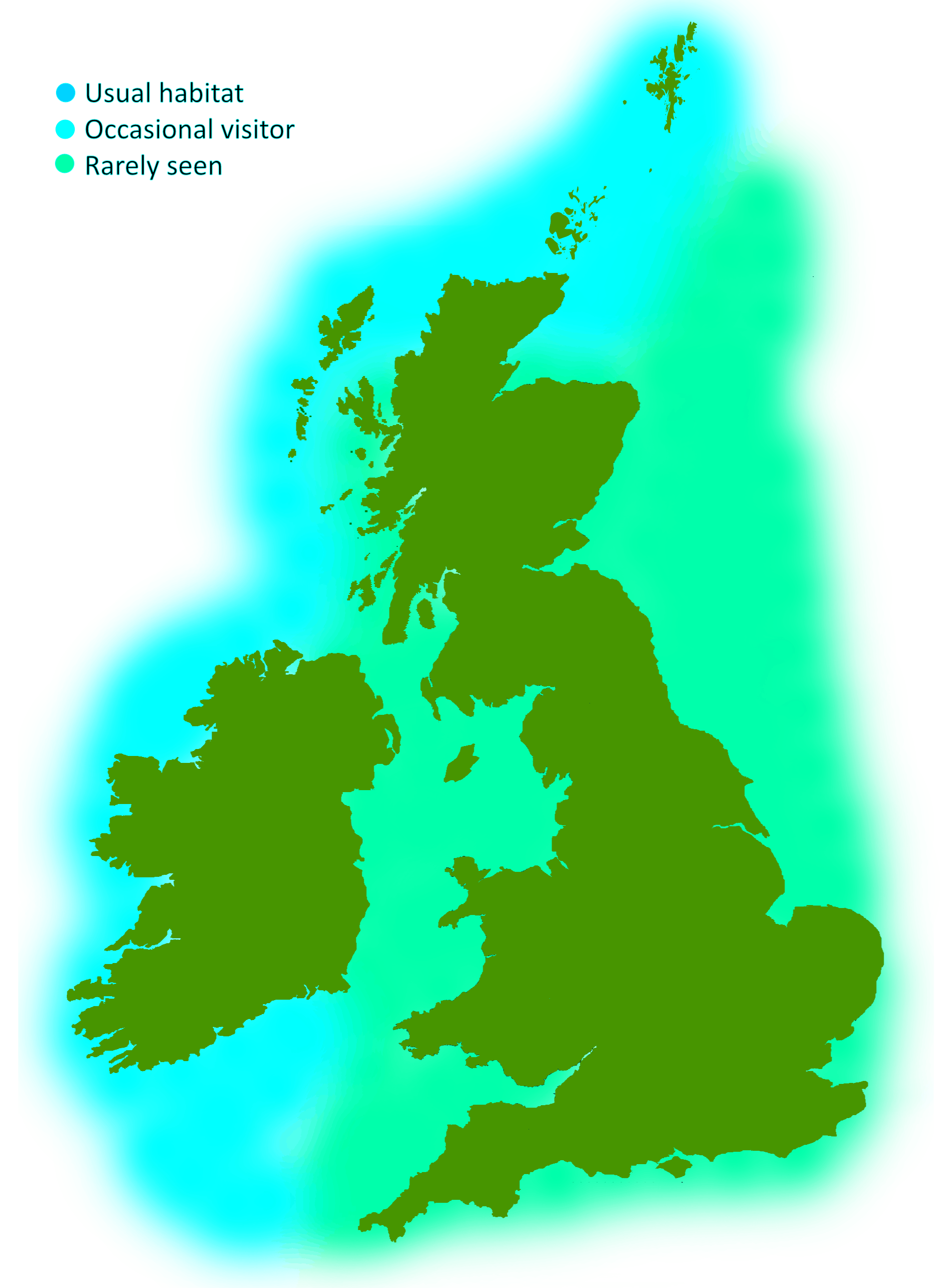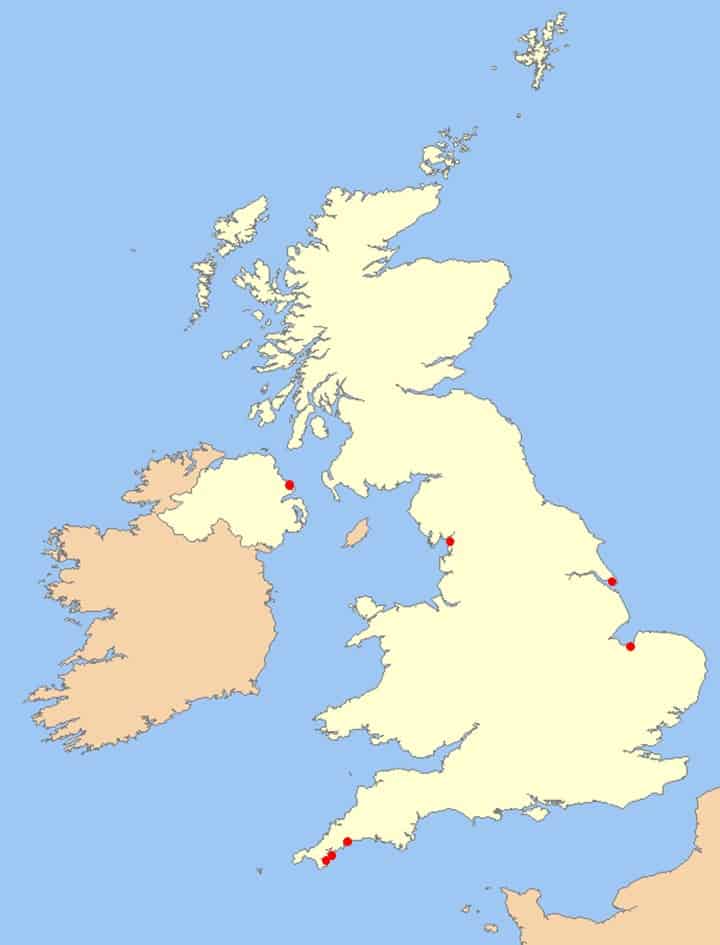
A pelagic baleen whale and the second largest animal ever (second only to the blue whale), adults can grow to more than 26 metres and live up to 90 years old. Having a silvery dark grey/brownish black upper body often with pale chevrons behind the blowholes, they have a proportionally small, sloping dorsal fin and a distinct ridge to their back showing down to the tail (hence also razorback whale). Pectoral fins are usually dark on the top and lighter underneath.
The best way to identify the species is from the asymmetrical colouration of their lower jaws and baleen; the right lower jaw and front right baleen is white to pale grey, while the left lower jaw and baleen is dark. Throat grooves number 56-100. Fin whales are born at 6-6.5 metres long, wean at 6-7 months and become sexually mature from 6 to 11 years. They feed on krill, small squid and fish such as mackerel, sprat and sand eel.
A large globally roaming species of whale. Fin whales are seen across the north Atlantic and do come fairly close to shore when prey species are abundant.
They can be difficult to formally identify when seen in the wild due to their size and shape being similar to blue and especially sei whales.

Sadly, it is not expected that a stranded fin whale will survive being stranded, as their sheer size makes them impossible to move safely except by the tide, and they will also be crushing themselves under their huge weight, causing severe internal damage that would make them unviable for refloatation in almost all cases.

A whale, dolphin or porpoise stranded on the beach is obviously not a usual phenomenon. These animals do not beach themselves under normal circumstances, and they will require assistance. Please DO NOT return them to the sea as they may need treatment and or a period of recovery before they are fit enough to swim strongly.
BDMLR RESCUE HOTLINE:
01825 765546 (24hr)
or
RSPCA hotline (England & Wales): 0300 1234 999
SSPCA hotline (Scotland): 03000 999 999
You will receive further advice over the phone, but important things you can do to help are:
If you find a dead cetacean
The Cetacean Strandings Investigation Programme (CSIP) collects a wide range of data on each stranding found on English and Welsh shores, whilst the Scottish Marine Animal Strandings Scheme (SMASS) does the same for Scotland. If you discover a dead animal, please contact the relevant hotline and give a description of the following where possible:
Digital images are extremely helpful to identify to species, as well as ascertaining whether the body may be suitable for post-mortem examination.
CSIP has produced a useful leaflet that can be downloaded by clicking here.
CSIP hotline (England and Wales): 0800 6520333.
SMASS hotline (Scotland): 07979245893.